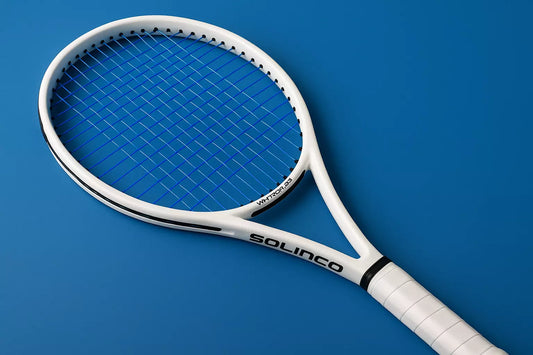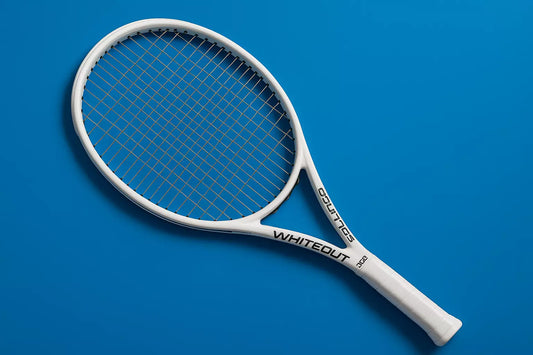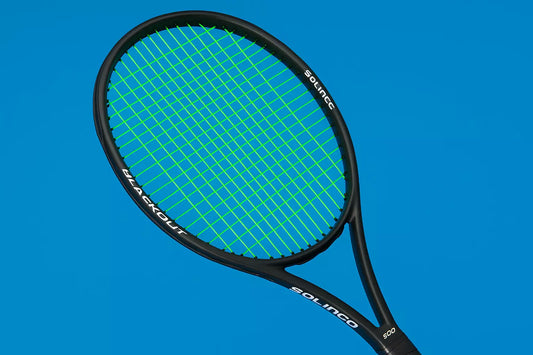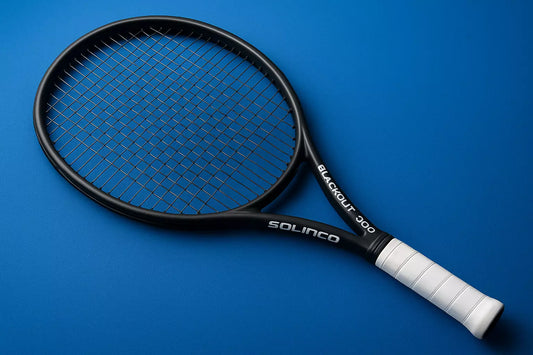Keeping your tennis strings fresh is just as important as choosing the right racket. Dead or worn strings can lead to reduced control, lost power, and even arm discomfort. But how often should you restring? The answer depends on how often you play, your playing style, and the type of string you use.
🎾 The General Rule of Thumb
A common guideline is:
Restring your racket as many times per year as you play per week.
For example:
- If you play twice a week → restring roughly every 6 months.
- If you play 4 times a week → restring every 3 months.
This is a starting point—other factors can shorten or extend that window.
🧵 String Type Matters: Polyester vs Multifilament vs Synthetic Gut
Not all strings age at the same rate. The type of string you choose has a big impact on how quickly tension drops and how often you’ll need to restring.
1. Polyester Strings
- Durability: High in terms of breakage resistance but lose tension quickly.
- Performance lifespan: 10–20 hours of play before they “go dead.”
- When to restring: Competitive players often restring every 2–4 weeks. Club players might need a restring every 1–2 months even if the strings haven’t broken.
-
Examples from Sam’s Strings:
- Solinco Hyper-G Soft – excellent for spin but needs frequent tension maintenance
- Babolat RPM Blast – a tour favourite that loses its lively feel after a few weeks
2. Multifilament Strings
- Durability: Softer and more comfortable but less resistant to breakage.
- Performance lifespan: They hold tension better than polyester but fray over time.
- When to restring: Every 6–10 weeks for regular players, or sooner if fraying worsens.
-
Examples from Sam’s Strings:
- Wilson Sensation – very arm-friendly, perfect for comfort seekers
- Solinco Vanquish – offers a blend of power and comfort with good tension retention
3. Synthetic Gut Strings
- Durability: A middle ground between poly and multifilament.
- Performance lifespan: Decent tension retention but not as soft as multifilament.
- When to restring: Roughly every 2–3 months for frequent players.
-
Examples from Sam’s Strings:
- Tecnifibre Synthetic Gut – consistent and cost-effective
⚠️ Signs It’s Time to Restring Now
Even if you haven’t hit your calendar target, look for these indicators:
- Loss of tension: You’re hitting long despite the same swing.
- Fraying or notching: Strings are visibly worn.
- Elbow or wrist discomfort: Dead strings transmit more shock.
- Lack of spin or “pop”: The ball feels flat off the strings.
📦 Combine Fresh Strings With Convenience
If you’re unsure when to restring—or simply want it to be hassle-free—our UK postal tennis racket restringing service makes it easy:
- Choose your string (poly, multifilament, or synthetic gut)
- Select your preferred tension
- Send your racket in a pre-paid package
- Get it back freshly restrung within 48 hours
We also offer extras like replacement grips and stencils, plus flexible delivery options via Evri or Yodel.
✅ Key Takeaways
- Restring frequency depends on how much you play and what strings you use.
- Polyester → great for spin but needs the most frequent restringing.
- Multifilament → arm-friendly, lasts longer before losing performance.
- Synthetic gut → balanced option but still needs regular checks.
- If your strings feel dead, frayed, or inconsistent—it’s time to restring, even if they haven’t broken.





